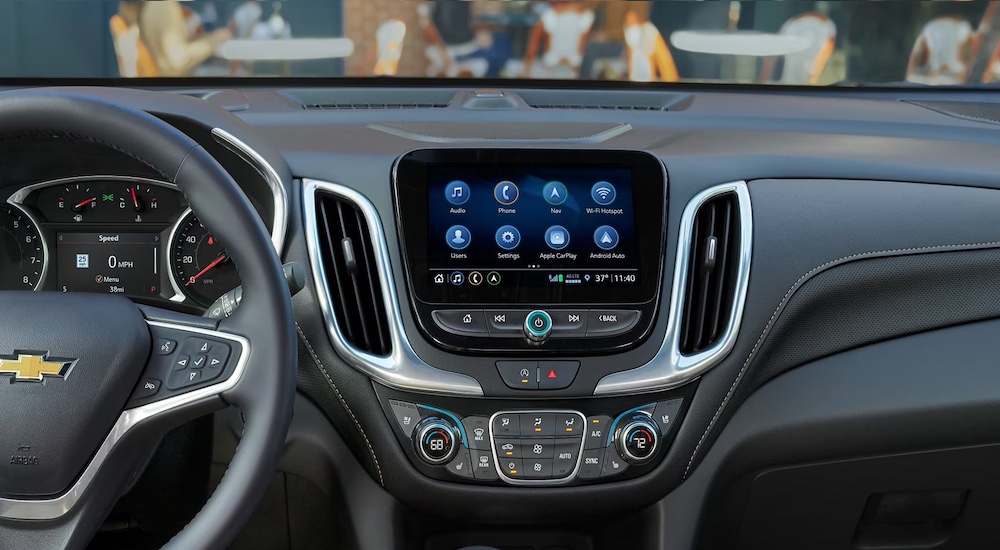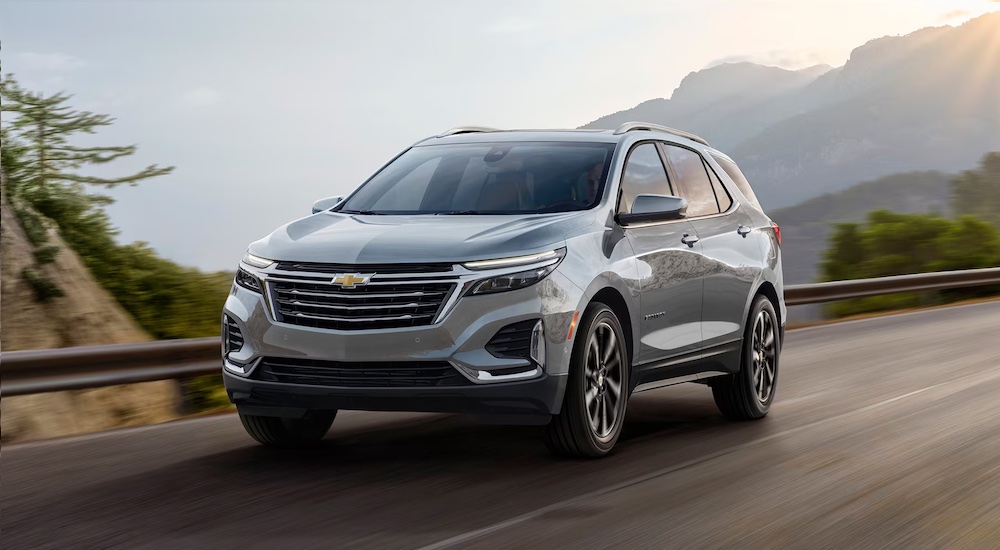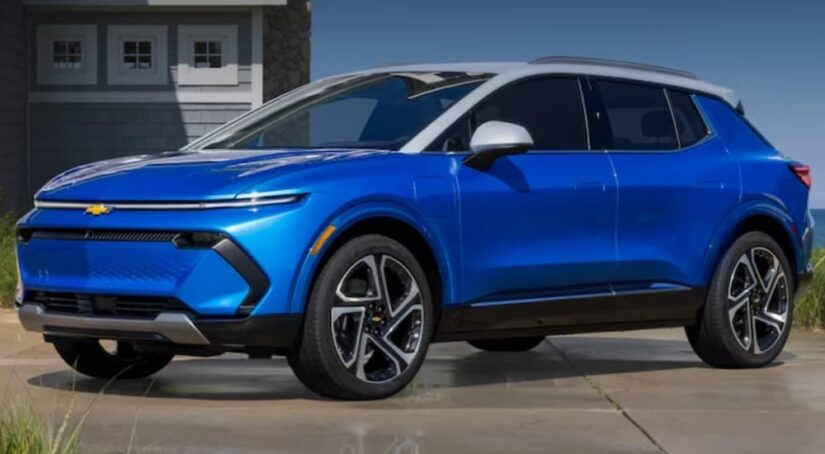Chevrolet has been on the cutting edge of automotive technology since it was founded over 100 years ago. Over that time, Chevy has either innovated or built upon new technology to make its vehicles safer, more efficient, faster, and more fun to drive. One thing that Chevy has helped popularize is the hybrid and electric vehicle (EV). These models use partial or total electrical power to drive the vehicle, reducing or completely eliminating the need to constantly stop at the pumps. With cars like the Volt and Bolt EV, Chevy has shown that EVs can be both efficient and affordable.
Now, the brand has decided to begin rolling out EV editions of some of its most popular vehicles, starting with the Equinox and Blazer SUVs. The idea is to offer drivers a model they know and love with an engine option that doesn’t require gasoline. If you want to see how Chevy got here, stop into your local used Chevy Equinox dealer to find out. This is because Chevy has been developing the Equinox to be a leader in its compact SUV vehicle class since it was first introduced to drivers in 2005. With an available EV option, the goal is to help the Equinox dominate this vehicle class well into the next decade.
The First Generation’s Engine Options
Chevy introduced the Equinox in 2005 as its entry into the compact SUV marketplace. The brand had found that motorists were moving away from conventional sedans and coupes, looking for roomier models with the benefits of higher ground clearance. However, these same drivers wanted to have models that were also fuel-efficient, with smaller wheelbases. So, rather than try to sell them some of the larger SUVs it was already producing, like the Suburban, the engineers and designers at Chevrolet went back to the drawing board to make a vehicle that hit these parameters. The result was the 2005 Equinox.
The first Equinox started the trend that would encompass the model’s history. It provides a spacious interior with plenty of trunk space while giving drivers an efficient and effective engine. It also has a unibody design, with improved handling and fuel economy. In fact, the first Equinox came with a standard 3.4-liter V6 gas engine. This delivered up to 185 hp and 210 lb-ft of torque, with the ability to get about 19 MPG in combined fuel economy. In addition, drivers could get all-wheel drive on the Equinox if they desired better on-road traction than the standard front-wheel drivetrain. However, the energy expended moving two axles instead of one resulted in a slight drop in fuel economy numbers.
Chevy made one more change to the first generation Equinox, offering a more powerful engine as an option, starting with the 2008 model. This was a 3.6-liter V6 offered on the Equinox Sport model, which provided a much more robust 264 hp and 250 lb-ft of torque. Chevy equipped this engine with a variable valve timing system to improve overall efficiency, a feature that is now on most gasoline engines. Nevertheless, while this engine will give your used Equinox better speed and acceleration, it will cost you about a mile or two in fuel economy.

Performance Improvements Made for the Second Generation
After the success of the first generation of the Equinox, Chevy decided to go one better when designing the second-generation model. As demand increased for better fuel economy, Chevy realized it needed to offer a more fuel-efficient engine on the Equinox to keep this crossover model competitive. This is why the 2010 Equinox features a completely different choice of engines than the prior year’s model. Gone were the 3.4-liter V6 that had always been available since the Equinox had been introduced, as well as the powerful but thirsty 3.6-liter V6. In its place, drivers were given the choice of a 2.4-liter I-4 and a 3.0-liter V6.
Both of these gas engines feature direct fuel injection, as well as a 6-speed automatic transmission. This allowed Chevy to equip the Equinox with smaller engines to improve fuel economy without hampering acceleration and performance. Like the first generation, the 2010 Equinox came with standard front-wheel drive and available all-wheel drive. For drivers looking for better fuel economy on a used Equinox, the 2010 model with front-wheel drive and a 2.4-liter I-4 will give you up to 32 MPG in highway driving. This engine produces an acceptable 182 hp and 172 lb-ft of torque.
If you’d prefer a little more acceleration, you could opt for the 3.0-liter V6 that delivers up to 264 hp and 222 lb-ft of torque. Front-wheel drive models with this engine provide an adequate 25 MPG on the highway. Chevy would make one engine change during the second generation of the Equinox. In 2013, it replaced the available 3.0-liter V6 gas engine with a larger 3.6-liter V6. This engine boosted output to 301 hp and 272 lb-ft of torque without significantly diminishing fuel economy on the Equinox.
Third Times the Charm
It’s not often that an automaker will radically change a popular model. This is especially true if it goes from one generation to the next. It’s one thing for a brand to take a vehicle off the market for a few years before introducing a major redesign. However, Chevy pulled this off when it introduced the third generation of the Equinox in 2018. The third generation of the Equinox proved to be smaller and more efficient than the two model generations that had come before. First, Chevy reduced the wheelbase on the Equinox from 112.5 inches to 107.3 inches. This over five-inch reduction made the Equinox lighter and easier to handle. Still, this reduction didn’t significantly alter the interior space, with the cargo room behind the first row of seats declining slightly from 63.7 cu.ft. to 63.5 cu.ft.
Also, Chevy began to feature three all-new engines on the 2018 Equinox. The base is a 1.5-liter Turbocharged I-4 with a 6-speed automatic transmission. This engine provides up to 170 hp and 203 lb-ft of torque, making it capable of 32 MPG in highway driving. The second engine is a 2.0-liter Turbocharged I-4 with a 9-speed automatic transmission. This gives delivers up to 252 hp and 260 lb-ft of torque, making this the fastest of the three engine options. It also provides a very impressive 29 MPG in highway driving.
The third engine on the 2018 Equinox is a 1.6-liter Turbo-Diesel I-4 with a 6-speed automatic transmission and one of the few compact SUVs with a diesel engine option. The Turbo-Diesel has an output of 137 hp and 240 lb-ft of torque. While this doesn’t have the acceleration of the other two engines, it does give you up to 39 MPG in highway driving. Chevy would eventually phase out the Turbo-Diesel engine option after the 2019 model year, and the 2.0-liter Turbocharged I-4 would also be discontinued after 2020. However, The 1.5-liter Turbocharged I-4 got a nice little boost for the 2023 model year, as it now provides 175 hp while giving you 31 MPG on the highway.

The Arrival of the Equinox’s 2024 Electric Model
The current model of the 2024 Equinox may be the last of the third generation. It features the standard 1.5-liter Turbocharged I-4 with a 6-speed transmission as in the prior year. It also gives drivers the choice of front-wheel and all-wheel drive, in a design that has had mainly cosmetic changes in its interior and exterior since the introduction of the third generation in 2018. Still, the Equinox has seen upgrades in the Chevrolet infotainment system and a broadening of the standard Chevy Safety Assist features offered on all trim levels of the Equinox.
In addition, Chevy is set to introduce the 2024 Equinox EV with a choice of a 250-mile front-wheel drive range and an extended battery with up to 300 miles for front-wheel drive and 280 miles for dual motor all-wheel drive. The fact that Chevy has chosen the Equinox to be one of two new EV models for the 2024 model year does show that the brand is committed to the future of the Equinox. Still, getting a used Equinox is a great way to enjoy this model while you wait to see what the future holds for Chevy’s highly successful compact SUV.



